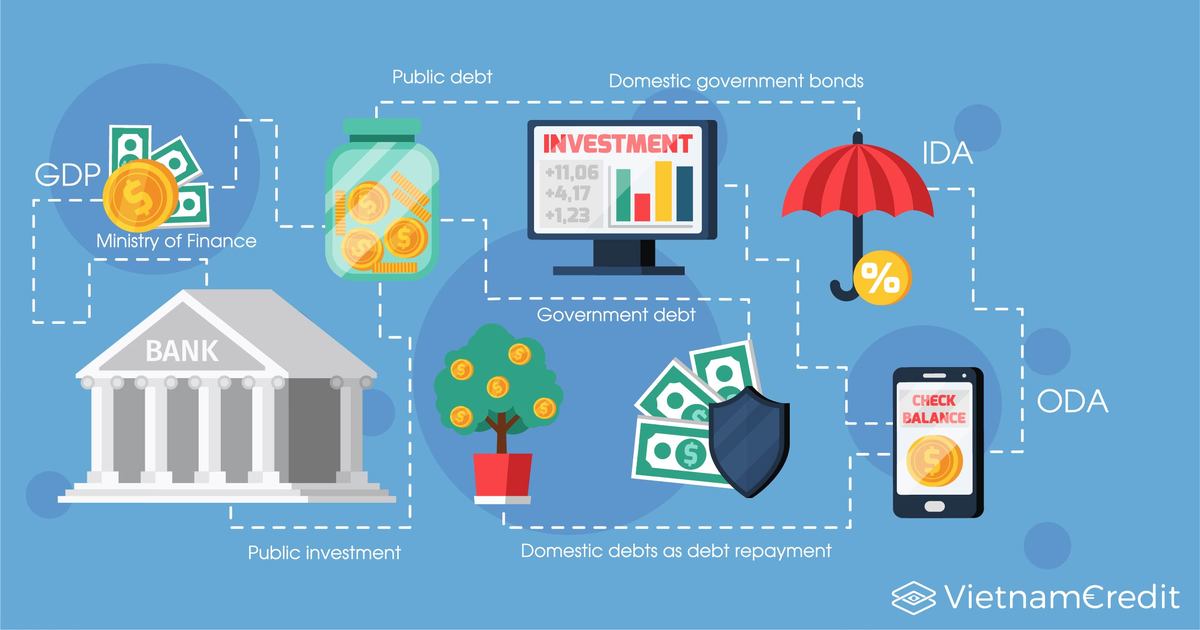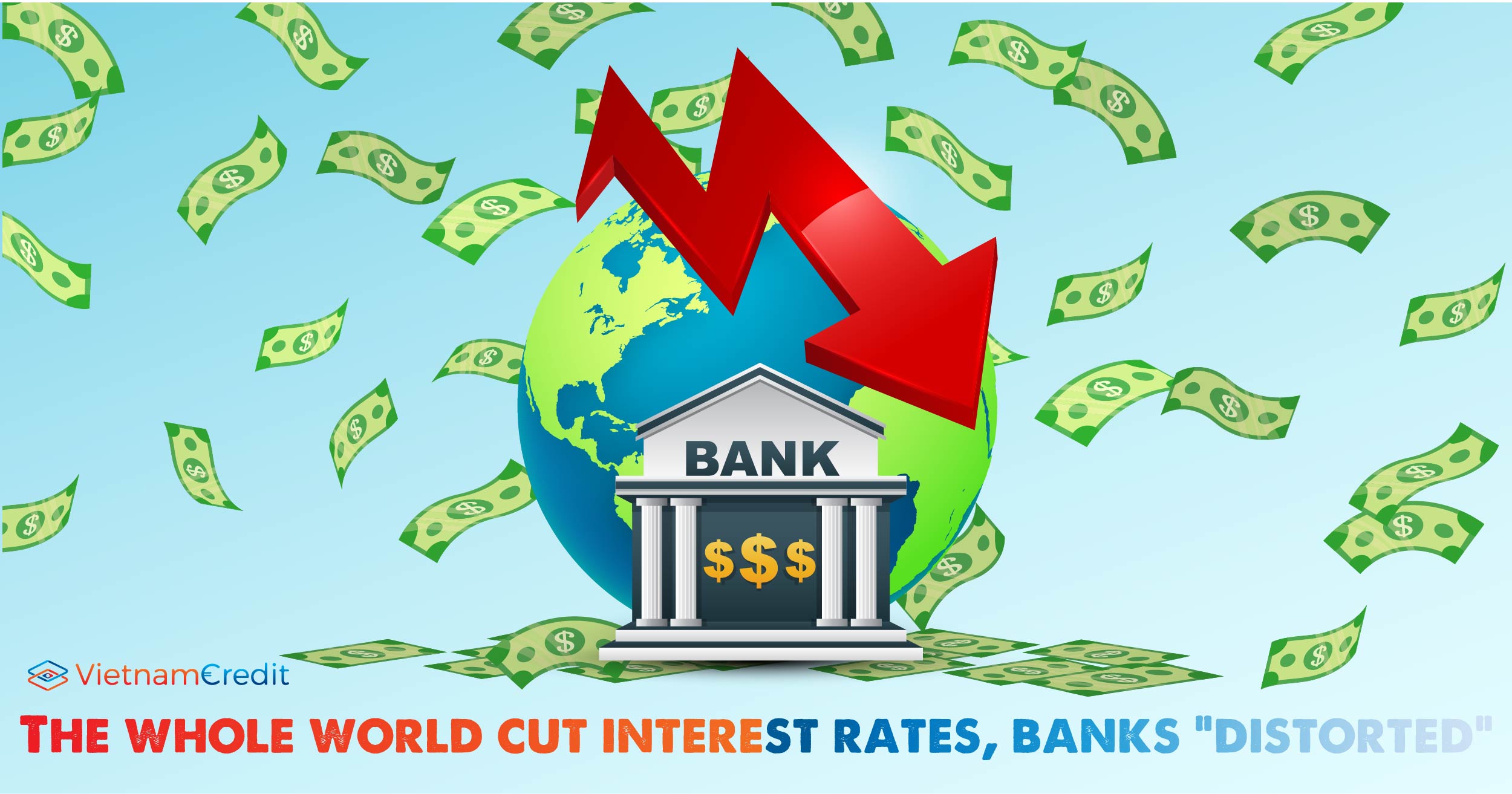The Government's report on the public debt situation in 2019 and 2020 prepared by the Ministry of Finance points out the risks Vietnam that Vietnam are facing in the near future.
Possible risks
According to the report, although the indicators for public debt and government debt to GDP continue to decrease compared to previous years, this only reflects the slow disbursement of public investment, especially from foreign sources. The slow disbursement leads to two major problems. On the one hand, the contribution to the economic growth by the loan is limited. On the other hand, the state budget still has to bear the committed cost of signed yet undisbursed loans.
In addition, although the size of the Government debt portfolio by the end of 2019 is well controlled at 49.2% of GDP (compared to 52.7% in 2016; 50.0% in 2018, the cost-risk ratios of Government debt portfolios tend to be less favorable than before because of the effect of Vietnam graduating from IDA since 2017. In particular, the refinancing risk is focused on the Government's domestic debts as debt repayment obligation is accrued in a number of years (10.3% of the Government's domestic debt portfolio will be due in 2020), posing a liquidity risk to the state budget.

For the domestic government bonds, the obligation to repay government bonds focuses on a number of times during the year and between 2020-2021. In addition, government bonds issued in foreign currencies worth USD 1.7 billion will be due in 2020 and 2021 and must be arranged in foreign currencies for payment.
It is expected that direct repayment obligations of the Government account for about 23% of the state budget revenues in 2020, which is close to the ceiling level (25%) allowed by the National Assembly in 2016-2020. Therefore, the Ministry of Finance emphasized that “the use of GDP scale to determine the public debt safety and ceilings in the 2021-2025 period should be carefully considered to ensure sustainability of debt portfolio through debt repayment targets of the Government compared to state budget revenues”.
The second risk comes from the interest rate of foreign debt portfolio which tends to increase due to the increase in the proportion of loans with floating interest rates (from 8.8% of the Government's foreign loans in 2015 to 11.4% in 2019).
In the context that international capital market conditions are forecasted to be tighter in the near future, the Government's obligation to repay foreign debts will increase accordingly. Regarding the Government's foreign debt portfolio, donors have gradually adjusted development cooperation policies with Vietnam by gradually shifting from ODA provision to loans with less favorable conditions. The cost of raising capital of some loans doubled compared to the previous period, increasing the Government's foreign debt service.
Decreasing ODA
In the next 5 years, ODA loans will gradually decrease, resulting in a shortage of long-term loans and preferential investment. Instead, the Government needs to mobilize new loans with much less favorable conditions, close to the market to make up the deficit for the state budget balance and medium-term public investment.
For domestic debt, the weighted average interest rate of the debt portfolio as of the end of 2019 is 5.7% / year, significantly lower compared to 6.6% / year in 2015. According to the
Ministry of Finance, in recent years when the market has been favorable, the Government has actively issued government bonds with a maturity of over 10 years to restructure the Government's debt portfolio in a sustainable manner. However, due to the small size of the bond market, while the financial potential of non-bank financial
The disbursement progress is often cumulative at the end of the year, which means the Government has to adjust the issuance volume, reducing the liquidity and the continuity of the market, affecting the ability of the Government to raise capital, especially during high market volatility. In the coming time, the gradual shift to market-based mobilization (due to the shortage of ODA and concessional loans) also significantly increases the risk and cost of capital mobilization of the Government.
In addition, not issuing short-term government bonds of less than 5 years also led to incomplete standard interest rate curves and lack of short-term reference interest rates for capital markets, reducing investor demand for Government bonds.
Although the ratio of loans in VND has increased (from 55% of the Government debt at the end of 2015 to 62.3% by the end of 2019), the Government's foreign debt portfolio still focuses on 3 main currencies including USD, JPY and EUR (accounting for 38.7%; 34.2% and 16.7% of the Government's foreign loans respectively as of December 31, 2019), which have experienced big fluctuations in recent times.
In addition, the amount of foreign currency government bonds issued domestically in the previous periods also increased the exchange rate risk for the USD of the Government debt portfolio. The Ministry of Finance also noted that the adjustment of the exchange rate by devaluation of the VND would also increase the nominal value of debts in foreign currencies when converted into domestic currencies.
























































